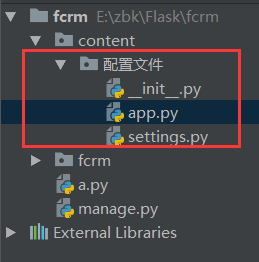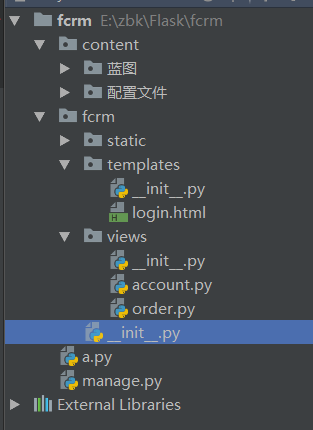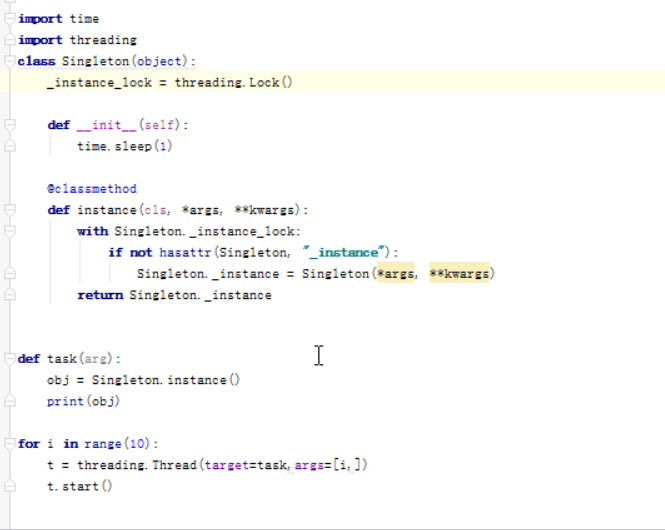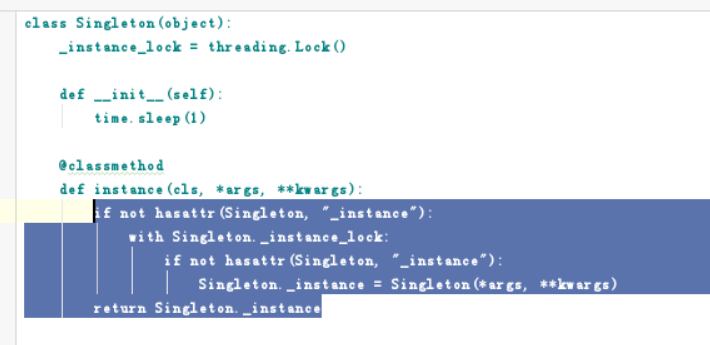Flask
一:介绍
Flask是一个使用 Python 编写的轻量级 Web 应用框架。其 WSGI 工具箱采用 Werkzeug ,模板引擎则使用 Jinja2 。Flask使用 BSD 授权。
Flask也被称为 “microframework” ,因为它使用简单的核心,用 extension 增加其他功能。Flask没有默认使用的数据库、窗体验证工具。
Flask是一个基于Python开发并且依赖jinja2模板和Werkzeug WSGI服务的一个微型框架,对于Werkzeug本质是Socket服务端,其用于接收http请求并对请求进行预处理,然后触发Flask框架,开发人员基于Flask框架提供的功能对请求进行相应的处理,并返回给用户,如果要返回给用户复杂的内容时,需要借助jinja2模板来实现对模板的处理,即:将模板和数据进行渲染,将渲染后的字符串返回给用户浏览器。
“微”(micro) 并不表示你需要把整个 Web 应用塞进单个 Python 文件(虽然确实可以 ),也不意味着 Flask 在功能上有所欠缺。微框架中的“微”意味着 Flask 旨在保持核心简单而易于扩展。Flask 不会替你做出太多决策——比如使用何种数据库。而那些 Flask 所选择的——比如使用何种模板引擎——则很容易替换。除此之外的一切都由可由你掌握。如此,Flask 可以与您珠联璧合。
默认情况下,Flask 不包含数据库抽象层、表单验证,或是其它任何已有多种库可以胜任的功能。然而,Flask 支持用扩展来给应用添加这些功能,如同是 Flask 本身实现的一样。众多的扩展提供了数据库集成、表单验证、上传处理、各种各样的开放认证技术等功能。Flask 也许是“微小”的,但它已准备好在需求繁杂的生产环境中投入使用。
一句话概括: flask 是一个轻量级且含有丰富组件的框架, 优点: 短小精悍
虚拟环境(virtualenv):
一个项目django1.7 一个项目django2.0 用一个django是不可能同时装两个版本。
解决方法:
创建一个虚拟环境,来让我们实现两个版本的使用。
pip3 install virtualenv 安装环境
virtualenv env1 创建一个虚拟环境env1
cd env1
cd Scripts
(env1) E:flaskenv1Scripts>
(env1) E:flaskenv1Scripts>deactivate.bat 退出env1
Scripts/activete 进入
Scripts/deactivete 退出
二: 安装使用
pip3 install flask

1 from werkzeug.wrappers import Request,Response 2 3 @Request.application 4 def hello(request): 5 return Response("Hello world") 6 7 8 if __name__ == '__main__': 9 from werkzeug.serving import run_simple 10 run_simple("localhost",4000,hello)
from flask import Flask app = Flask(__name__) #实例化 @app.route('/index') #路由系统 def hello_world(): #视图函数 return 'Hello world' if __name__ == '__main__': app.run() #启动
路由:
反向生成url: url_for endpoint

from flask import Flask,url_for app=Flask(__name__) @app.route("/index",methods=['GET','POST'],endpoint='aaa') def index(): v = url_for('aaa') print(v) return 'ok' if __name__ == '__main__': app.run()
路由传参: /index/<int:nid>

from flask import Flask,url_for app=Flask(__name__) @app.route("/index/<int:nid>",methods=['GET','POST'],endpoint='aaa') def index(nid): v = url_for('aaa',nid=666) print(v) print(nid) return 'ok' if __name__ == '__main__': app.run()
默认值,当URL中无参数,函数需要参数时,使用defaults={'k':'v'}为函数提供参数.
对URL最后的 / 符号是否严格要求. strict_slashes=None,

from flask import Flask,url_for app=Flask(__name__) @app.route("/index/<int:nid>",methods=['GET','POST'],endpoint='aaa',defaults={'nid':777},strict_slashes=False) def index(nid): # v = url_for('aaa',nid=666) # print(v) print(nid) return 'ok' if __name__ == '__main__': app.run()
重定向:redirect_to='路径'

from flask import Flask,url_for,redirect app=Flask(__name__) @app.route('/new',redirect_to='/old') def new(): return 'new' @app.route('/old') def old(): return 'old' if __name__ == '__main__': app.run()
对于所有的域名都需要解析为ip地址,然而浏览器并回去哪找?它会先去本地找。
两种解决方法:
1.去租个域名 aaa.com
2. 去租个公网ip 97.25.22.11
域名解析:
aaa.com 97.25.22.11
把代码放到 97.25.22.11公网的ip服务器上去运行。
然后,再去访问aaa.com的时候,它会先找域名,把域名解析为ip,
接着在浏览器对ip发起请求,服务器就会接收到请求并响应。
本地测试:
自己的本地文件:
C:WindowsSystem32driversetchost里面。添加对应的信息。


from flask import Flask,url_for,redirect app=Flask(__name__) app.config['SERVER_NAME'] = 'aaa.com:5000' #这句要记得加上 #只有访问 admin.aaa.com:5000/index 才有效 @app.route('/index', subdomain="admin") def admin_index(): return "admin.aaa.com" @app.route('/index',subdomain="www") def admin_index(): return "www.aaa.com" if __name__ == '__main__': app.run()
扩展url,自定义URL匹配正则表达式。

from flask import Flask,url_for app = Flask(__name__) # 定义转换的类 from werkzeug.routing import BaseConverter class RegexConverter(BaseConverter): """ 自定义URL匹配正则表达式 """ def __init__(self, map, regex): super(RegexConverter, self).__init__(map) self.regex = regex def to_python(self, value): """ 路由匹配时,匹配成功后传递给视图函数中参数的值 :param value: :return: """ return int(value) def to_url(self, value): """ 使用url_for反向生成URL时,传递的参数经过该方法处理,返回的值用于生成URL中的参数 :param value: :return: """ val = super(RegexConverter, self).to_url(value) return val # 添加到converts中 app.url_map.converters['xxx'] = RegexConverter # 进行使用 @app.route('/index/<xxx("d+"):nid>',endpoint='xx') def index(nid): url_for('xx',nid=123) return "Index" if __name__ == '__main__': app.run()
视图:
Django:
FBV: /index/ func 对应函数
CBV: /index/ IndexClass.as_view() 对应类
Flask也支持CBV:
from flask import Flask,url_for,views app = Flask(__name__) def auth(func): def inner(*args, **kwargs): result = func(*args, **kwargs) return result return inner class IndexView(views.MethodView): # methods = ['POST'] decorators = [auth,] #装饰器 def get(self): v = url_for('index') #反向生成url print(v) return "GET" def post(self): return "GET" app.add_url_rule('/index', view_func=IndexView.as_view(name='index')) if __name__ == '__main__': app.run()
模板语言:
1.模板继承

#模板页面:layout.html <!DOCTYPE html> <html lang="en"> <head> <meta charset="UTF-8"> <meta http-equiv="X-UA-Compatible" content="IE=edge"> <meta name="viewport" content="width=device-width, initial-scale=1"> <title>Title</title> </head> <body> <h1>模板</h1> {% block body %} {% endblock %} </body> </html> 继承的页面: index.html {% extends "layout.html" %} {% block body %} {{v1}} <ul> {% for item in v2%} <li> {{item}} </li> {% endfor %} {{v2.0}} {{v2.1}} {{v2.2}} </ul> <ul> {% for key,val in v3.items() %} <li>{{key}}:{{val}}</li> {% endfor%} {% for k in v3.items() %} <li>{{k.0,k.1}}</li> <li>{{k}}</li> {% endfor%} {% for k in v3 %} <li>{{k}}</li> {% endfor%} {% for k in v3.values() %} <li>{{k}}</li> {% endfor%} </ul> {{v3.name}}:{{v3.age}} {{v3.get('name')}} {{v3.get('age')}} {{v4}} {{v4|safe}} {{test(1,19)}} {{sb(50,50)}} {{50|db(100,100)}} {% macro xxxx(name, type='text', value='') %} <input type="{{ type }}" name="{{ name }}" value="{{ value }}"> <input type="{{ type }}" name="{{ name }}" value="{{ value }}"> <input type="{{ type }}" name="{{ name }}" value="{{ value }}"> <input type="{{ type }}" name="{{ name }}" value="{{ value }}"> {% endmacro %} {{ xxxx('n1') }} {% endblock %}
2.模板语言.py
from flask import Flask,render_template,Markup app = Flask(__name__) def test(a1,a2): return a1+a2 @app.template_global() #公共资源 前端的用法: {{sb(100,100)}} def sb(a1, a2): return a1 + a2 + 100 @app.template_filter() #公共资源 前端的用法: {{1|db(100,100)}} def db(a1, a2, a3): return a1 + a2 + a3 @app.route('/index2') def index(): v1 = "字符串" v2 = [11,22,33] v3 = {'name':'zbk','age':18} v4 = Markup("<input type='text' / >") return render_template('index2.html',v1=v1,v2=v2,v3=v3,v4=v4,test=test) if __name__ == '__main__': app.run()
前端:index2.html
{% extends "layout.html" %}
{% block body %}
{{v1}}
<ul>
{% for item in v2%}
<li>
{{item}}
</li>
{% endfor %}
{{v2.0}}
{{v2.1}}
{{v2.2}}
</ul>
<ul>
{% for key,val in v3.items() %}
<li>{{key}}:{{val}}</li>
{% endfor%}
{% for k in v3.items() %}
<li>{{k.0,k.1}}</li>
<li>{{k}}</li>
{% endfor%}
{% for k in v3 %}
<li>{{k}}</li>
{% endfor%}
{% for k in v3.values() %}
<li>{{k}}</li>
{% endfor%}
</ul>
{{v3.name}}:{{v3.age}}
{{v3.get('name')}}
{{v3.get('age')}}
{{v4}}
{{v4|safe}}
{{test(1,19)}}
{{sb(50,50)}}
{{50|db(100,100)}}
# 宏
{% macro xxxx(name, type='text', value='') %}
<input type="{{ type }}" name="{{ name }}" value="{{ value }}">
<input type="{{ type }}" name="{{ name }}" value="{{ value }}">
<input type="{{ type }}" name="{{ name }}" value="{{ value }}">
<input type="{{ type }}" name="{{ name }}" value="{{ value }}">
{% endmacro %}
{{ xxxx('n1') }}
{% endblock %}
Session:

from flask import Flask,session from werkzeug.local import LocalProxy app = Flask(__name__) app.secret_key = 'asdadas' app.config['SESSION_COOKIE_NAME'] = 'session_zbk' """ 'SESSION_COOKIE_NAME': 'session', 'SESSION_COOKIE_DOMAIN': None, 支持的域名 'SESSION_COOKIE_PATH': None, 'SESSION_COOKIE_HTTPONLY': True, 'SESSION_COOKIE_SECURE': False, 'SESSION_REFRESH_EACH_REQUEST': True, 'PERMANENT_SESSION_LIFETIME': timedelta(days=31) 是否每次都更新 """ @app.route('/index3') def index(): # print(type(session)) # session本质上操作的是字典,假设session保存在数据库 # session['xxx'] = 123 # session['xx1'] = 123 # session['xx2'] = 123 # session['xx3'] = 123 # del session['xx2'] session['xx3'] = 123 return 'xxx'
闪现flash:
它是基于session创建的,flash往里面放个值,只要取一下就没了,
说简单点:就是session取值的时候就不是读取了,而是POP了。

from flask import Flask,session,Session,flash,get_flashed_messages,redirect,render_template,request app = Flask(__name__) app.secret_key ='sdfsdfsdf' @app.route('/users') def users(): # msg = request.args.get('msg','') # msg = session.get('msg') # if msg: # del session['msg'] v = get_flashed_messages() print(v) msg = '' return render_template('users.html',msg=msg) @app.route('/useradd') def user_add(): # 在数据库中添加一条数据 # 假设添加成功,在跳转到列表页面时,显示添加成功 # return redirect('/users?msg=添加成功') # session['msg'] = '添加成功' flash('添加成功') return redirect('/users') if __name__ == '__main__': app.run()
扩展:类似装饰器,中间件。

from flask import Flask,session,Session,flash,get_flashed_messages,redirect,render_template,request app = Flask(__name__) app.secret_key ='sdfsdfsdf' @app.before_request def process_request1(): print('process_request1') @app.after_request def process_response1(response): print('process_response1') return response @app.before_request def process_request2(): print('process_request2') @app.after_request def process_response2(response): print('process_response2') return response @app.route('/index') def index(): print('index') return 'Index' @app.route('/order') def order(): print('order') return 'order' # @app.route('/test') # def test(): # print('test') # return 'test' if __name__ == '__main__': app.run()
Flask : 文件配置
1.文件参考

2.app.py:
from flask import Flask,session,current_app
# 创建配置, Config 从实例化的时候就开始有了。
app = Flask(__name__)
app.secret_key ='sdfsdfsdf'
# 方式一:缺点:都在一个文件下
# app.config['SESSION_COOKIE_NAME'] = 'session_zbk' #
# 方式二:优点; 分离开,不在文件下
# app.config.from_pyfile('settings.py')
#settings下的.print(app.config['AAAA'])
# 方式三:优点:django也是这么做的。谁读取文件,可以隔离开。
# import os
# os.environ['FLAKS-SETTINGS'] = 'settings.py'
# app.config.from_envvar('FLAKS-SETTINGS')
# 方式四:常用 .如果是python2 是 string, import_string 如果是python3 是 encode. 推荐用第四种,优点:不需要导入。
# app.config.from_object('settings.DevConfig')
@app.route('/index',endpoint='xx')
def index():
print(current_app.config) #current_app:不管views视图函数在哪,都可以找到。
session['xx3'] = 123
return "xxx"
if __name__ == '__main__':
# app.__call__
app.run()
3.settings.py:
class BaseConfig(object):
AAAA=123
class TestConfig(BaseConfig):
DB = '127.0.0.1'
class DevConfig(BaseConfig):
DB = '192.168.1.1'
class ProConfig(BaseConfig):
DB = '47.18.1.1'
蓝图:
作用:原本是一个文件,但是业务代码太多,我们就需要分类了。不同的东西放在不同的文件。
在flask中,凡是多py文件需要拆分的,都应该用蓝图来做。把目录结构做一个调整。
action:

manage.py: 启动文件
import fcrm if __name__ == '__main__': fcrm.app.run()
__init__.py : 内部关联条件

from flask import Flask from .views import account from .views import order # __init__ 表示:导入这个模块它就导入了,执行了 app = Flask(__name__) print(app.root_path) app.register_blueprint(account.account) app.register_blueprint(order.order)
account.py: 账户相关
from flask import Blueprint,render_template account = Blueprint('pap_account',__name__) @account.route('/login') def login(): return render_template('login.html')
order.py : 订单相关
from flask import Blueprint order = Blueprint('pap_order',__name__) @order.route('/order') def login(): return 'Order'
小结: 通过蓝图,可以调整我们的目录结构,把不同的东西都拆分,放在另一个文件。
数据库连接池:
3个过程:
1.第一步,每次请求反复创建数据库连接。 缺点:连接数太多
解决方法: 把连接放到全局下。

from flask import Flask from db import POOL import pymysql app = Flask(__name__) app.secret_key ='sdfsdfsdf' conn = pymysql.connect() #放在全局下 @app.route('/index') def index(): # 第一步:缺点:每次请求反复创建数据库连接,连接数太多 cursor = conn.cursor() cursor.execute('select * from tb where id > %s',[5,]) result = cursor.fetchall() cursor.close() conn.close() print(result) return '执行成功' if __name__ == '__main__': # app.__call__ app.run()
2.第二步:如果是多线程的话,pymysql只知道同一时刻,只处理一个线程。因为,源代码有个 theadsafety = 1 缺点:不能支持并发
解决方法:加把锁,强制实现串行。 只有第一个线程执行完了,另一个线程才能进来。所以这样一来,也支持多线程。

from flask import Flask from db import POOL import pymysql app = Flask(__name__) app.secret_key ='sdfsdfsdf' @app.route('/index') def index(): # 第一步:缺点:每次请求反复创建数据库连接,连接数太多 # conn = pymysql.connect() # cursor = conn.cursor() # cursor.execute('select * from tb where id > %s',[5,]) # result = cursor.fetchall() # cursor.close() # conn.close() # print(result) # 第二步:缺点,不能支持并发 pymysql.threadsafety with LOCK: cursor = CONN.cursor() cursor.execute('select * from tb where id > %s', [5, ]) result = cursor.fetchall() cursor.close() print(result) return '执行成功' if __name__ == '__main__': # app.__call__ app.run()
3.第三步: 支持多线程,但是,不能并发操作。 以上两部是两个极端,所以我们得折中一下。
python里面并没有解决方案,我们需要引入第三方模块。该模块为: pip3 install dbutils

from flask import Flask from db import POOL import pymysql app = Flask(__name__) app.secret_key ='sdfsdfsdf' @app.route('/index') def index(): # 第一步:缺点:每次请求反复创建数据库连接,连接数太多 # conn = pymysql.connect() # cursor = conn.cursor() # cursor.execute('select * from tb where id > %s',[5,]) # result = cursor.fetchall() # cursor.close() # conn.close() # print(result) # 第二步:缺点,不能支持并发 # pymysql.threadsafety # with LOCK: # cursor = CONN.cursor() # cursor.execute('select * from tb where id > %s', [5, ]) # result = cursor.fetchall() # cursor.close() # # print(result) # 第三步:基于DBUtils实现数据连接池 # - 为没个线程创建一个连接,该线程关闭时,不是真正关闭;本线程再次调用时,还是使用的最开始创建的连接。直到线程终止,数据库连接才关闭。 # - 创建一个连接池(10个连接),为所有线程提供连接,使用时来进行获取,使用完毕后,再次放回到连接池。 # PS: conn = POOL.connection() cursor = conn.cursor() cursor.execute('select * from tb1') result = cursor.fetchall() conn.close() return '执行成功' if __name__ == '__main__': # app.__call__ app.run()
dbutils有两种模式:
模式一:为每一个线程创建一个连接。如果一个线程反复去连接数据库的时候,始终用的是属于自己的那一个连接。 close并没有真的关闭,是一个伪关闭。线程终止了才会关闭。
""" 为每个线程创建一个连接,thread.local实现。 """ from DBUtils.PersistentDB import PersistentDB import pymysql POOL = PersistentDB( creator=pymysql, # 使用链接数据库的模块 maxusage=None, # 一个链接最多被重复使用的次数,None表示无限制 setsession=[], # 开始会话前执行的命令列表。如:["set datestyle to ...", "set time zone ..."] ping=0, # ping MySQL服务端,检查是否服务可用。# 如:0 = None = never, 1 = default = whenever it is requested, 2 = when a cursor is created, 4 = when a query is executed, 7 = always closeable=False, # 如果为False时, conn.close() 实际上被忽略,供下次使用,再线程关闭时,才会自动关闭链接。如果为True时, conn.close()则关闭链接,那么再次调用pool.connection时就会报错,因为已经真的关闭了连接(pool.steady_connection()可以获取一个新的链接) threadlocal=None, # 本线程独享值得对象,用于保存链接对象,如果链接对象被重置 host='127.0.0.1', port=3306, user='root', password='123', database='pooldb', charset='utf8' ) def func(): # conn = SteadyDBConnection() conn = POOL.connection() cursor = conn.cursor() cursor.execute('select * from tb1') result = cursor.fetchall() cursor.close() conn.close() # 不是真的关闭,而是假的关闭。 conn = pymysql.connect() conn.close() conn = POOL.connection() cursor = conn.cursor() cursor.execute('select * from tb1') result = cursor.fetchall() cursor.close() conn.close() import threading for i in range(10): t = threading.Thread(target=func) t.start()
模式二:创建一个连接池,为所有线程提供连接,线程使用完毕,就把连接重新放回到连接池里。 连接池所有的连接都会被重复使用。theadsafety = 1
import time import pymysql import threading from DBUtils.PooledDB import PooledDB, SharedDBConnection POOL = PooledDB( creator=pymysql, # 使用链接数据库的模块 maxconnections=6, # 连接池允许的最大连接数,0和None表示不限制连接数 mincached=2, # 初始化时,链接池中至少创建的空闲的链接,0表示不创建 maxcached=5, # 链接池中最多闲置的链接,0和None不限制 maxshared=3, # 链接池中最多共享的链接数量,0和None表示全部共享。PS: 无用,因为pymysql和MySQLdb等模块的 threadsafety都为1,所有值无论设置为多少,_maxcached永远为0,所以永远是所有链接都共享。 blocking=True, # 连接池中如果没有可用连接后,是否阻塞等待。True,等待;False,不等待然后报错 maxusage=None, # 一个链接最多被重复使用的次数,None表示无限制 setsession=[], # 开始会话前执行的命令列表。如:["set datestyle to ...", "set time zone ..."] ping=0, # ping MySQL服务端,检查是否服务可用。# 如:0 = None = never, 1 = default = whenever it is requested, 2 = when a cursor is created, 4 = when a query is executed, 7 = always host='127.0.0.1', port=3306, user='root', password='123', database='pooldb', charset='utf8' ) def func(): # 检测当前正在运行连接数的是否小于最大链接数,如果不小于则:等待或报raise TooManyConnections异常 # 否则 # 则优先去初始化时创建的链接中获取链接 SteadyDBConnection。 # 然后将SteadyDBConnection对象封装到PooledDedicatedDBConnection中并返回。 # 如果最开始创建的链接没有链接,则去创建一个SteadyDBConnection对象,再封装到PooledDedicatedDBConnection中并返回。 # 一旦关闭链接后,连接就返回到连接池让后续线程继续使用。 # PooledDedicatedDBConnection conn = POOL.connection() # print(th, '链接被拿走了', conn1._con) # print(th, '池子里目前有', pool._idle_cache, ' ') cursor = conn.cursor() cursor.execute('select * from tb1') result = cursor.fetchall() conn.close() conn = POOL.connection() # print(th, '链接被拿走了', conn1._con) # print(th, '池子里目前有', pool._idle_cache, ' ') cursor = conn.cursor() cursor.execute('select * from tb1') result = cursor.fetchall() conn.close() func()
本地线程:
两个过程:
1.第一步:由于线程执行的速度快,途中sleep2秒,所有每个线程所打印的值都一样,前面打印的值都被最后一个的覆盖了。
import threading import time # 本地线程对象 # local_values = threading.local() class Foo(object): def __init__(self): self.name= None local_values = Foo() def func(num): """ # 第一个线程进来,本地线程对象会为他创建一个 # 第二个线程进来,本地线程对象会为他创建一个 { 线程1的唯一标识:{name:1}, 线程2的唯一标识:{name:2}, } :param num: :return: """ local_values.name = num # 4 # 线程停下来了 time.sleep(2) # 第二个线程: local_values.name,去local_values中根据自己的唯一标识作为key,获取value中name对应的值 print(local_values.name, threading.current_thread().name) for i in range(5): th = threading.Thread(target=func, args=(i,), name='线程%s' % i) th.start()
打印如下;

2.第二步: 本地线程能把我们做一个: 线程与线程之间的数据的隔离。
import threading import time # 本地线程对象 local_values = threading.local() def func(num): """ # 第一个线程进来,本地线程对象会为他创建一个 # 第二个线程进来,本地线程对象会为他创建一个 { 线程1的唯一标识:{name:1}, 线程2的唯一标识:{name:2}, } :param num: :return: """ local_values.name = num # 4 # 线程停下来了 time.sleep(2) # 第二个线程: local_values.name,去local_values中根据自己的唯一标识作为key,获取value中name对应的值 print(local_values.name, threading.current_thread().name) for i in range(5): th = threading.Thread(target=func, args=(i,), name='线程%s' % i) th.start()
打印如下:

总结: 一下是实现了:即完成了并发,又防止无限制的连接
app.py:
from flask import Flask from db import POOL #导入 import pymysql app = Flask(__name__) app.secret_key ='sdfsdfsdf' @app.route('/index') def index(): conn = POOL.connection() #连接POOL ,即完成了并发,又防止无限制的连接 cursor = conn.cursor() cursor.execute('select * from tb1') result = cursor.fetchall() conn.close() return '执行成功' if __name__ == '__main__': # app.__call__ app.run()
db.py:
import time import pymysql import threading from DBUtils.PooledDB import PooledDB, SharedDBConnection POOL = PooledDB( creator=pymysql, # 使用链接数据库的模块 maxconnections=6, # 连接池允许的最大连接数,0和None表示不限制连接数 mincached=2, # 初始化时,链接池中至少创建的空闲的链接,0表示不创建 maxcached=5, # 链接池中最多闲置的链接,0和None不限制 maxshared=3, # 链接池中最多共享的链接数量,0和None表示全部共享。PS: 无用,因为pymysql和MySQLdb等模块的 threadsafety都为1,所有值无论设置为多少,_maxcached永远为0,所以永远是所有链接都共享。 blocking=True, # 连接池中如果没有可用连接后,是否阻塞等待。True,等待;False,不等待然后报错 maxusage=None, # 一个链接最多被重复使用的次数,None表示无限制 setsession=[], # 开始会话前执行的命令列表。如:["set datestyle to ...", "set time zone ..."] ping=0, # ping MySQL服务端,检查是否服务可用。# 如:0 = None = never, 1 = default = whenever it is requested, 2 = when a cursor is created, 4 = when a query is executed, 7 = always host='127.0.0.1', port=3306, user='root', password='123', database='pooldb', charset='utf8' )
上下文处理:需要了解内部结构
本地线程:是flask里面自己创建的一个线程。它是怎么创建的?(本地线程只要用到可上下文处理的退一部分内容)
知识:
gevent 依赖于 greenlet 的协程。
from greenlet import getcurrent as get_ident
from _thread import get_ident # 获取线程的唯一标识 get_ident()
ident = self.__ident_func__() # 获取当前线程(协程)的唯一标识
storage[ident][name] = value # { 111:{'stack':[] },222:{'stack':[] } }
Local的功能跟本地线程类似: 如果有人创建一个对象,往这设置值,每个线程里都有一份。
但是,如果安装 greenlet ,那么它还是线程的唯一标识吗?它就不是线程的唯一标识了。而是 每一个协程的唯一标识了,
-------------from greenlet import getcurrent as get_ident -----=-----------------
如果装上它(greenlet),之前是一个线程创建一个连接,它是一个协程,微线程,它创建的更细了。
它就不是线程的唯一标识了。而是 每一个协程的唯一标识了。每一个线程里有多个协程。
LocalStack里面的push方法,就是往local里面添加stack.(为当前线程(协程)创建了一个stack和列表。)
def push(self, obj): """Pushes a new item to the stack""" rv = getattr(self._local, 'stack', None) if rv is None: """ self._local= { 唯一标示: {'stack':[]} } """ self._local.stack = rv = [] rv.append(obj) return rv
def pop(self): """Removes the topmost item from the stack, will return the old value or `None` if the stack was already empty. """ # [] stack = getattr(self._local, 'stack', None) #getattr把stack拿回来了,是一个列表 if stack is None: return None elif len(stack) == 1: #release_local(self._local) return stack[-1] #把列表的一个值拿回来。如果有一个就拿最后一个,多个就pop出来。 else: return stack.pop()
@property def top(self): """The topmost item on the stack. If the stack is empty, `None` is returned. """ try: return self._local.stack[-1] #只取一个,并没有删。 except (AttributeError, IndexError): return None
_request_ctx_stack = LocalStack() #实力化一个对象
小结:
class Local:这个类用来保存每一个线程或者协程的值。
class LocalStack: 去列表里面的取值。
当程序运行起来,就会在创建一个stack对象,localstack封装一个自己的local对象。local对象就相当于一个字典。
利用flask源码中的stack和local。
from functools import partial from flask.globals import LocalStack, LocalProxy _request_ctx_stack = LocalStack() class RequestContext(object): #请求相关 def __init__(self, environ): self.request = environ def _lookup_req_object(name): top = _request_ctx_stack.top if top is None: raise RuntimeError(_request_ctx_stack) return getattr(top, name) # 实例化了LocalProxy对象,_lookup_req_object参数传递 session = LocalProxy(partial(_lookup_req_object, 'session')) """ local = { “标识”: {'stack': [RequestContext(),]} } """ _request_ctx_stack.push(RequestContext('c1')) # 当请求进来时,放入 print(session) # 获取 RequestContext('c1'), top方法 print(session) # 获取 RequestContext('c1'), top方法 _request_ctx_stack.pop() # 请求结束pop
小结: flask里的request,session都是pop原理。相当于连接池。
补充 : 源代码。
ctrl+request


单例模式:



